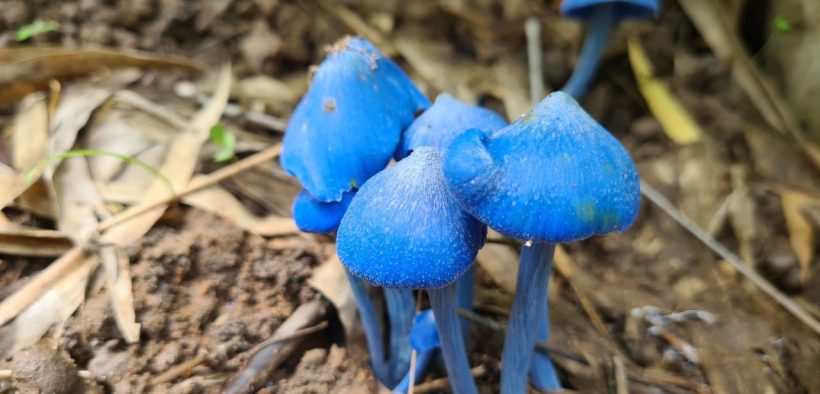During routine forest patrols around July 20 in the dense green expanses of Kagaznagar division, nestled within the Komaram Bheem Asifabad district of Telangana, forest officials stumbled upon an astonishing sight—a cluster of vibrant, all-blue mushrooms emerging from the moist forest floor. Identified as Entoloma hochstetteri, commonly known as the “blue pinkgill” or “sky-blue mushroom,” this discovery marks the first confirmed recording of the species in the region and adds a spectacular note to India’s mycological inventory.
Advertisements

Native to New Zealand, E. hochstetteri is renowned not just for its deep indigo-blue cap but also for its cultural significance—it graces the country’s $50 note and has been named the national fungus. The mushroom owes its striking hue to rare azulene pigments, and its gills acquire a pinkish tint as spores mature, giving rise to its “pinkgill” descriptor.
According to forest range officer S. Venugopal, the bizarre blue hue “immediately caught the eye” of patrolling officials, prompting further scientific curiosity. The mushroom reportedly even appears to glow faintly at night, adding to its other-worldly appearance.
Ecologists and mycologists are particularly intrigued by this range expansion. Previously first recorded in India in Odisha back in 1989, the mushroom’s presence in Telangana underscores a broader distribution than once believed.
Beyond its aesthetic appeal, E. hochstetteri may hold scientific promise. Preliminary chemical analyses suggest the presence of bioactive compounds such as antioxidants and antimicrobial agents—potential leads for future pharmacological research. However, toxicity remains unconfirmed; fungi of the Entoloma genus are known for both edible and poisonous species, and so caution is advised.
Experts note the importance of protecting this rare species and its environment. It is believed to thrive in moist, leafy forest beds during the monsoon—making habitat conservation vital to its survival. Unchecked disturbance may threaten its delicate growth cycle.
Dr. Jagadeesh Batthula, Assistant Professor of Forest Resource Management, emphasized the broader ecological implications: Entoloma species often contribute to nutrient cycling—either by decomposing dead matter or forming symbiotic mycorrhizal relationships with trees, thereby enriching soil and forest health.
